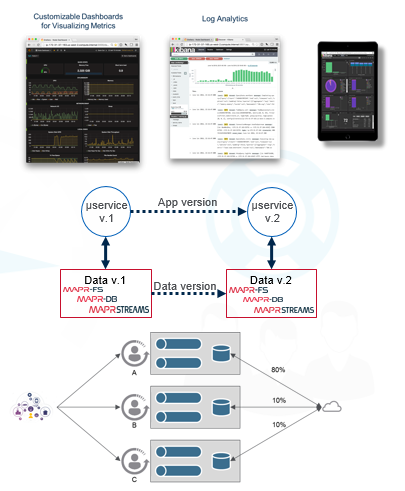
MapR Embraces Microservices in Big Data Platform

The rise of microservices in recent years is one of the general IT trends that’s paralleled the emergence of big data technology. This week at the Strata Hadoop World conference, MapR will be talking about how it plans to embrace the development and management of microservices in its converged data platform.
In an IT context, microservices are used to describe how developers create a large number of relatively small applications that work together to accomplish a task. The microservices themselves are often called and executed using APIs, such as REST or SOAP-based. The concept of microservcies is central to the idea of the so-called “API economy.”
The same ideas apply in the big data context. In MapR’s case, the company wants to work with microservices in the same way that it works with data pipelines. MapR’s Senior Director of Industry Solutions Dale Kim explains.
“You might have a number of data sources coming through and you’re going to process them in a number of different ways, create different outputs, or use some comparisons, like multi-variate testing,” Kim says. “It’s more the focus on what the micro-service, or mini application is doing, individually and how it coordinates with other microservies. There’s a whole network of services that work together, and they can be plugged in can be added on. It allows a lot of adaptability.”
With the upcoming version 5.2 release of the MapR Platform, the company plans to deliver new management features that will simplify how developers and managers deal with big data microservices that may utilize data in different states. Because MapR is a converged platform that exposes different interfaces to the same underlying data — such as making it appear in a table for SQL processing, JSON for querying via Drill, or as a streaming data pipeline managed by its integrated publish-and-subscribe processing systems–it’s important to simplify things for customers.

MapR is enabling its converged platform to handle data pipelines and applications as reusable microservices
“Having a micro-service deal with that data adds complexity to the development process,” says Jack Norris, senior vice president of data and applications for the San Jose, California company. “What we’ve provided is his volume, this logical collection, of not only the application but data itself. The data can be in motion, it can be in tables or files or what have you. That whole thing can be versioned an dealt with so if you’ve got incremental updates, you can update the application and also the data surrounding it.”
One of the MapR customers already using this capability is Altitude Digital, an ad-tech firm specializing in the delivery of video advertisements. The company uses a range of machine learning capabilities to ensure that its’ delivering the right videos to the right viewers at the right time. As MapR’s Kim explains, the company has found MapR’s microservices architecture conducive to rapid iteration in the area of fraud detection.
“There are a lot of bots out there that are evolving rapidly and that are messing up their metrics, and they need to be able to account for what behavior looks like a bot and toss that data out,” Kim says. “They have to move quickly. They’re looking at billions of events per day. The microservices model simply means you’re building smaller applications that can be reused across different solutions. It gives them the agility they need to adjust their machine learning.”
MapR is also developing a blueprint to help guide customers in their adoption of MapR’s new microservices capabilities. The first blueprint will be focused on high-speed trading in the financial industry. Other blueprints are expected to follow.
The microservices development capability in the MapR platform will be available free of charge in the community edition, while the more advanced monitoring and management capabilities will only be available to those who purchase an enterprise license.
Related Items:
Fresh Streaming Data: Get It While It’s Hot
MapR Appoints New CEO, Preps for ‘Hypergrowth’



























